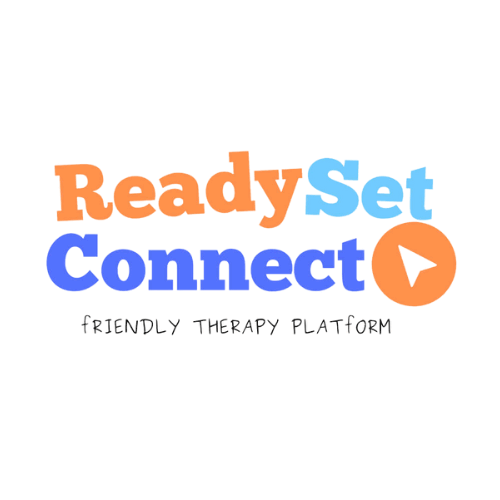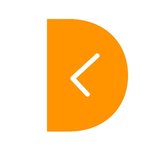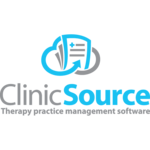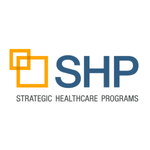What Is Occupational Therapy Software?
Occupational therapy software is a subset of software created expressly for occupational therapists, clinics, and healthcare facilities. It is a computerized application that helps manage and automate different parts of occupational therapy, including patient scheduling, treatment planning, documentation, and invoicing. With the growing demand for efficient and effective healthcare services, occupational therapy software has become an indispensable tool for therapists seeking to improve their practice and give high-quality care to their patients.
This software provides a full range of features and capabilities that help therapists manage and streamline their daily tasks. It enables therapists to create and manage patient records in a secure and easily available digital format, including demographic information, medical history, treatment plans, progress notes, and evaluations. This reduces the need for paper records, lowering the risk of errors and enhancing efficiency.
Occupational therapy software can also aid with appointment scheduling and calendar management, allowing therapists to make the most of their time and resources. It also includes tools for electronic invoicing, insurance claim submission, and payment processing, which reduces paperwork and expedites reimbursement processes. One of the primary advantages of using occupational therapy software is the ability to construct individualized treatment programs for patients.
The software enables therapists to develop and personalize treatment plans based on the patient's unique needs, goals, and progression. It also includes tools for tracking and measuring a patient's progress, which is critical in determining the effectiveness of the therapy. Furthermore, occupational therapy software frequently interfaces with other healthcare systems, such as electronic health records and practice management software, allowing for smooth data sharing and reducing duplication of effort. This promotes communication among healthcare providers and ensures that patients receive continuous care.
What Are The Recent Trends In Occupational Therapy Software?
Current Trends in Occupational Therapy Software:
1. Cloud-Based Solutions: One of the most significant changes in occupational therapy software is the transition to cloud-based solutions. This enables therapists to access patient records, treatment plans, and other critical information from any device with internet connectivity. It also makes it easy for several therapists to work together on treatment plans and updates.
2. Mobile Applications: With the growing popularity of smartphones and tablets, there has been an increase in the creation of mobile applications expressly for occupational therapists. These apps provide therapists with a simple way to access tools and resources on the road while also improving communication with patients.
3. Personalization And Customization: Each client has unique wants and requirements, and the latest occupational therapy software is designed to meet these needs. This includes configurable treatment programs, patient progress tracking, and the option to add unique exercises and activities.
4. Data Analytics And Reporting: As technology advances, occupational therapy software now supports sophisticated data analytics and reporting. This enables therapists to monitor patient development, evaluate the efficacy of treatment plans, and make adjustments to improve outcomes.
5. Integration With Electronic Health Records (EHR): Many occupational therapy software solutions are now designed to work with EHR systems used in healthcare settings. This allows for seamless sharing of medical data, minimizes paperwork, and enhances overall efficiency.
6. Gamification: In recent years, the use of gamification in occupational therapy software has increased. This strategy incorporates game aspects to make therapy sessions more entertaining and motivational for patients. It also enables therapists to monitor progress and adapt treatment approaches accordingly.
7. Virtual Reality (VR) And Augmented Reality (AR): Occupational therapists can use VR and AR technologies to create immersive and interactive therapy sessions for their patients. This not only makes therapy more enjoyable, but it also helps to improve motor skills and cognitive abilities.
Benefits Of Using Occupational Therapy Software
Occupational therapy (OT) software is a vital resource for healthcare clinicians and therapists that specialize in assisting people with developing, improving, or regaining daily life and work abilities. This software automates administrative tasks and streamlines the therapy process, which saves time and improves efficiency.
In this buyer's guide, we'll go over the primary advantages of adopting occupational therapy software, so you can make an informed decision for your business or facility.
1. Increased Productivity And Efficiency: One of the most significant advantages of employing OT software is the reduction in administrative responsibilities. With automated appointment scheduling, record keeping, and billing, therapists can spend less time on paperwork and more time providing great care to their patients. This leads to enhanced productivity and efficiency, allowing therapists to see more patients each day.
2. Comprehensive Patient Management: OT software provides a one repository for all patient data, such as medical history, treatment plans, progress notes, and more. This safe and organized database enables therapists to quickly and readily access critical information, resulting in more accurate assessments and treatment plans.
3. Customizable Treatment Plans: Many OT software solutions enable therapists to tailor therapy goals and interventions to each patient's specific needs. This flexibility leads to more effective therapy and better outcomes for patients. Therapists can also monitor a patient's progress during therapy and make changes to the treatment plan as necessary.
4. Integration With Electronic Medical Records (EMR): By integrating OT software with an EMR system, double data entry is eliminated, resulting in accurate and up-to-date patient records. This integration also enhances communication among therapists and other healthcare providers, allowing for a multidisciplinary approach to patient care.
5. Improved Communication And Collaboration: OT software frequently contains capabilities that facilitate secure communication among therapists, patients, and caregivers. These capabilities may include messaging, telemedicine, and video conferencing, which promote greater communication and collaboration among all parties engaged in a patient's care.
6. Improved Data Analysis And Reporting: OT software offers sophisticated data analysis and reporting capabilities, enabling therapists to precisely track and measure their patients' development. This function can also help you identify areas for improvement and optimize treatment strategies for better results.
7. Cost Savings: By automating administrative activities, lowering paperwork, and enhancing efficiency, occupational therapy software can result in significant cost savings for therapy practices and facilities. Furthermore, increased productivity and quality of service might attract new patients and boost revenue.
Important Factors To Consider While Purchasing Occupational Therapy Software?
When purchasing occupational therapy software, customers should examine several essential factors to ensure that they choose the best option for their needs.
These variables include the software's features and functionality, compatibility with existing systems, pricing, and support and training choices.
1. Features And Functionality: The first and most important consideration is the features and functionality of the occupational therapy software. It should include the resources required to facilitate therapeutic sessions, documentation, scheduling, and patient management. Furthermore, it should include aspects related to occupational therapy treatments, such as assessments, goal setting, and progress tracking.
2. Compatibility: Before purchasing software, be sure it is compatible with your organization's existing systems and devices. This includes compatibility with operating systems, electronic health record systems, and any other software that may be required to interface with the occupational therapy software. This will assist avoid technological issues and ensure a smooth workflow.
3. Pricing: The cost of occupational therapy software varies widely depending on its features, size, and customization choices. To find the greatest fit, you must first evaluate your budget and analyze the pricing of several software solutions. Keep in mind that cheaper solutions may lack all necessary functions, whereas more expensive ones may include functionality that your firm does not require.
4. Support And Training: It is critical to assess the amount of support and training offered by the software firm. Look for solutions that include training sessions or tools to help your employees learn how to utilize the software efficiently. Furthermore, ensure that there is prompt technical help available in the event of any problems or questions.
5. User-Friendly Interface: The user interface of occupational therapy software should be simple and easy to use. It should not be extremely difficult, as this may cause annoyance and reduce productivity. Request a demo or trial version to evaluate the interface and determine how user-friendly it is.
6. Security And Privacy: Ensure that the software adheres to HIPAA laws and has adequate security mechanisms in place to protect patient data. This is critical to maintaining confidentiality and safeguarding sensitive information.
7. Customization Options: Consider the software's customization options. Can you upload your own forms, exams, or templates? Can the software be adapted to your organization's specific requirements and workflows? Customization can significantly improve the software's usability and performance.
What Are The Key Features To Look For In Occupational Therapy Software?
When looking into occupational therapy software, there are a few crucial elements to examine to guarantee you're getting the finest option for your needs.
These features will affect not just the software's operation, but also its ability to assist you streamline your therapeutic procedures and improve patient outcomes.
1. Tailored Assessment Tools: Look for software that includes a full set of assessment tools created exclusively for occupational therapy. This can involve standardized testing, customized checklists, and other evaluation tools used to develop treatment plans and track progress.
2. Customizable Care Plans: Each patient is unique, and their therapy plan should reflect that. Look for software that allows you to construct tailored care plans based on the patient's specific needs and goals. This allows you to give more effective and individualized care.
3. Electronic Documentation: Manual documentation is time-consuming and prone to mistakes. Choose software that supports electronic documentation, allowing you to effortlessly input, store, and retrieve patient information. This saves time, increases accuracy, and assures compliance with confidentiality and security regulations.
4. Schedule Management: Managing several patients and appointments can be a challenging endeavor. Choose software that has scheduling capabilities to assist you easily manage your appointments, patient attendance, and cancellations.
5. Data Analysis And Reporting: Good software should not only assist you in patient management, but also provide insights into your practice. Look for systems that have data analysis and reporting options to help you better understand your patient demographics, treatment outcomes, and overall performance.
6. Billing And Payment Process: Simplify your billing process by using software that includes billing and payment processing. This will save time, eliminate human error, and improve cash flow management.
7. Integration And Compatibility: In today's digital world, it is critical to select software that works flawlessly with your current systems and technology. This will allow you to prevent data silos and increase overall efficiency.
8. User-Friendly Interface: No matter how powerful and innovative a software is, if it is not easy to use, it will be ineffective. Look for solutions with simple interfaces that require minimum training for your employees.
9. Patient Portal: Look into software that has a patient portal, which allows patients to access their information, complete paperwork, and contact with their therapist online. This not only increases patient participation but also decreases administrative workload.
10. Customer Support: Finally, select a software vendor that provides dependable customer service. This ensures that any technical issues or questions are addressed swiftly, resulting in a great experience for both you and your patients.
Why Do Businesses Need Occupational Therapy Software?
Businesses require occupational therapy software for a variety of reasons.
1. Streamline Processes And Save Time: Occupational therapy software automates a variety of administrative activities, including appointment scheduling, patient tracking, and billing. This streamlines the entire process and saves therapists and staff valuable time, allowing them to focus on providing quality treatment to their patients.
2. Improve Efficiency And Productivity: Occupational therapy software, with features such as electronic documentation and online billing, minimizes the need for manual paperwork and reduces the likelihood of errors. This improves therapists' efficiency and production, allowing them to treat more patients in less time.
3. Improve Patient Outcomes: Occupational therapy software has built-in treatment plans and customized goal-setting tools, making it easier for therapists to create treatment programs tailored to each patient's individual needs. This leads to more positive patient outcomes and satisfaction.
4. Improve Communication And Collaboration: Most occupational therapy software offers secure messaging and telemedicine features, which allow therapists to effortlessly connect with their clients and colleagues. This encourages teamwork and raises the overall standard of care.
5. Ensure Compliance And Data Security: Occupational therapy software is designed to comply with industry rules while protecting sensitive patient information. This guarantees that businesses comply with regulatory requirements while maintaining the confidentiality of their patients' information.
How Much Time Is Required To Implement Occupational Therapy Software?
The time required to adopt occupational therapy software varies based on several factors, including the organization's size, the complexity of the software, and the level of customization necessary. The implementation procedure can last anything from a few weeks to many months. Data migration, software installation, personnel training, and testing are all critical elements in the implementation process.
The first stage is to migrate existing patient data to the new software platform, which might take a few days to a week depending on how much data needs to be transferred. The next step is to install the program on the organization's computers and create user accounts for employees. This phase can last a few days or perhaps a week, and it is critical to verify that the software is properly configured and integrated with the organization's other systems.
Staff training is an important element in software implementation. Training programs can last anywhere from one day to many weeks, depending on the software's complexity and functionality. It is critical that all staff members receive enough training to facilitate a smooth transfer to the new system. Finally, testing the software is critical to identifying any flaws or issues that must be resolved before going live. This step could last a few days to a week, depending on the amount of tests run and the complexity of the software.
What Is The Level Of Customization Available In Occupational Therapy Software?
Occupational therapy software offers varying levels of customization based on the user's individual demands and expectations. In general, occupational therapy software offers a wide number of customization options, allowing users to adjust the software to their specific workflow and practice requirements. At the most basic level, most occupational therapy software allows users to create their own dashboard and add or remove specific elements based on their preferences.
This includes deciding on the types of evaluations and assessments, designing unique templates, and adding individual notes and remarks. Users can also customize the interface and layout to make it more user-friendly for their particular practice. Moving on to a more advanced level of customization, occupational therapy software includes capabilities that allow users to tailor treatment plans and activities to their patients' specific needs.
This includes planning specific activities and routines, as well as developing personalized goals and objectives. Users can also create custom data fields to capture unique patient information including demographics, medical history, and progress reports. Furthermore, some software allows you to incorporate specific treatment theories and intervention procedures utilized by the therapist.
This level of customisation enables a more extensive and individualized approach to therapeutic sessions. Furthermore, occupational therapy software may have connections with other systems or the capacity to generate bespoke reports and analysis. This provides a more detailed assessment of patient progress and the overall success of the therapy approach.
Which Industries Can Benefit The Most From Occupational Therapy Software?
Occupational therapy software is specially designed to help individuals with physical, cognitive, or mental disabilities to improve their daily function and quality of life. This software not only streamlines the therapy process but also offers personalized treatment plans and progress tracking.
It is a valuable tool that can benefit a wide range of industries, including healthcare, education, and corporate settings.
1. Healthcare Industry: The healthcare industry can benefit greatly from occupational therapy software, as it helps therapists and healthcare providers to efficiently manage their caseloads. This software allows them to store patient records, schedule appointments, and create personalized therapy plans based on each patient's specific needs. It also provides a platform for therapists to communicate and collaborate with other healthcare professionals, ensuring coordinated and effective care for their patients.
2. Education Sector: Occupational therapy software can also provide immense support to educational institutions, especially those catering to students with special needs. This software can help teachers and therapists to develop and implement Individualized Education Programs (IEPs) for students with disabilities. It offers access to a wide range of educational activities and exercises that can assist in improving skills such as fine motor coordination, visual perception, and sensory integration. This software also helps in monitoring the progress of students and provides valuable data to assess the effectiveness of therapy interventions.
3. Corporate Settings: With the growing awareness of mental health and wellness in the workplace, many companies are incorporating occupational therapy software in their employee wellness programs. This software can help employees to manage stress, improve work-life balance, and enhance their overall well-being. It also offers ergonomic assessments for workstations and provides recommendations for modifications to prevent work-related injuries and promote good posture.
4. Rehabilitation Facilities: Occupational therapy software is an essential tool for rehabilitation facilities as it simplifies the process of creating treatment plans for patients recovering from injuries, surgeries, or strokes. It offers a wide range of exercises and activities that can be customized according to the patient's needs and progress. This software also allows therapists to monitor and track patient progress in real-time, making adjustments to the treatment plan as needed.
Conclusion
Finally, when selecting occupational therapy software, you should evaluate your practice's specific needs and goals. As stated throughout this article, there are numerous features and functionality to look for in a software solution, including documentation and billing, patient scheduling, integrated assessments, and configurable templates.
Furthermore, reviewing the software's compatibility and usability, as well as the amount of assistance supplied by the company, is critical to ensuring a smooth implementation and continued use. It is also advisable to read reviews and request demos to gain a better knowledge of the software's capabilities and how it might fulfill your practice's specific needs. Considering the budget and scalability of the program is critical for long-term success.
By taking all of these variables into account and following the advice and recommendations in this book, you can confidently choose the best occupational therapy software to increase the efficiency and efficacy of your practice. Investing in a high-quality software solution benefits not just your patients, but also your team and bottom line. We hope this guidance has been useful in your decision-making process.













